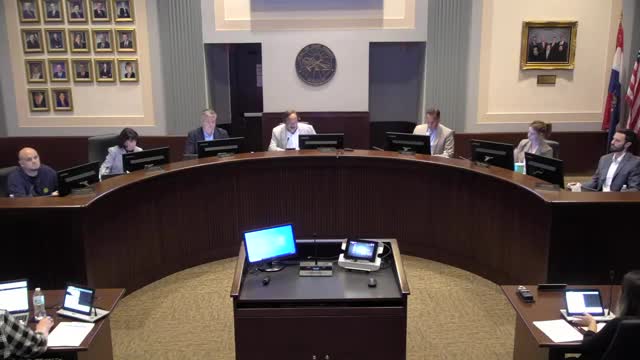County Considers Economic Development Bonds After Years of Inactivity
September 26, 2024 | Clay County, Missouri
This article was created by AI summarizing key points discussed. AI makes mistakes, so for full details and context, please refer to the video of the full meeting. Please report any errors so we can fix them. Report an error »

During a recent government meeting, officials discussed the potential revival of Chapter 100 industrial revenue bonds as an economic development tool for the county. This marks the first consideration of such incentives in nearly a decade, with the last issuance occurring in 2014. The meeting featured a presentation by Sid Douglas, the county's bond counsel, who provided an overview of how Chapter 100 works and its implications for local economic development.
Chapter 100 allows public entities to issue bonds for commercial projects, offering tax abatements that can significantly reduce operational costs for businesses. Douglas explained that the county could either loan the proceeds from the bonds to a private entity or acquire assets that would then be leased back to the company. This structure allows the assets to be exempt from property taxes, providing substantial financial relief to businesses.
The discussion highlighted the benefits of such incentives, including reduced property taxes and sales tax exemptions on construction materials and equipment. Douglas emphasized that these incentives are typically negotiated, allowing for flexibility in the level of tax abatement granted based on the project's potential economic impact, such as job creation and capital investment.
Commissioners raised questions about the performance of past Chapter 100 projects, particularly the one from 2014, which involved significant investments and job commitments. Douglas noted that while he could not provide specific performance data without further research, he acknowledged that municipalities often utilize these bonds more frequently than counties, primarily due to the location of most economic development projects within city boundaries.
The meeting also touched on the importance of including \"clawback\" provisions in agreements, which would allow the county to reclaim tax benefits if a company fails to meet its performance targets. Douglas explained that these provisions typically adjust the level of tax abatement proportionally based on the company's performance rather than requiring full repayment of benefits.
As the county considers moving forward with a new Chapter 100 proposal, officials plan to establish a funding agreement with the interested developer to cover due diligence costs associated with evaluating the project. This agreement aims to protect taxpayer interests while allowing the county to assess the viability of the proposed development.
Overall, the meeting underscored the county's cautious approach to economic incentives, balancing the potential benefits of attracting new businesses with the need for accountability and oversight in the use of public resources.
Chapter 100 allows public entities to issue bonds for commercial projects, offering tax abatements that can significantly reduce operational costs for businesses. Douglas explained that the county could either loan the proceeds from the bonds to a private entity or acquire assets that would then be leased back to the company. This structure allows the assets to be exempt from property taxes, providing substantial financial relief to businesses.
The discussion highlighted the benefits of such incentives, including reduced property taxes and sales tax exemptions on construction materials and equipment. Douglas emphasized that these incentives are typically negotiated, allowing for flexibility in the level of tax abatement granted based on the project's potential economic impact, such as job creation and capital investment.
Commissioners raised questions about the performance of past Chapter 100 projects, particularly the one from 2014, which involved significant investments and job commitments. Douglas noted that while he could not provide specific performance data without further research, he acknowledged that municipalities often utilize these bonds more frequently than counties, primarily due to the location of most economic development projects within city boundaries.
The meeting also touched on the importance of including \"clawback\" provisions in agreements, which would allow the county to reclaim tax benefits if a company fails to meet its performance targets. Douglas explained that these provisions typically adjust the level of tax abatement proportionally based on the company's performance rather than requiring full repayment of benefits.
As the county considers moving forward with a new Chapter 100 proposal, officials plan to establish a funding agreement with the interested developer to cover due diligence costs associated with evaluating the project. This agreement aims to protect taxpayer interests while allowing the county to assess the viability of the proposed development.
Overall, the meeting underscored the county's cautious approach to economic incentives, balancing the potential benefits of attracting new businesses with the need for accountability and oversight in the use of public resources.
View full meeting
This article is based on a recent meeting—watch the full video and explore the complete transcript for deeper insights into the discussion.
View full meeting
